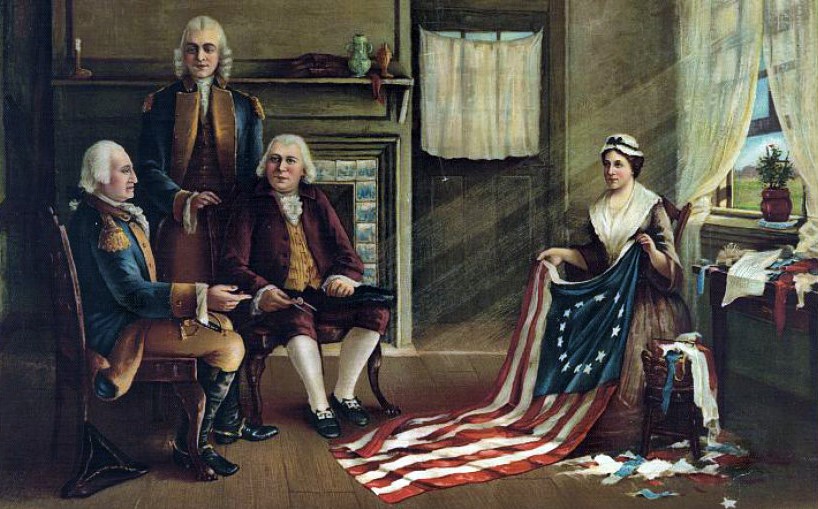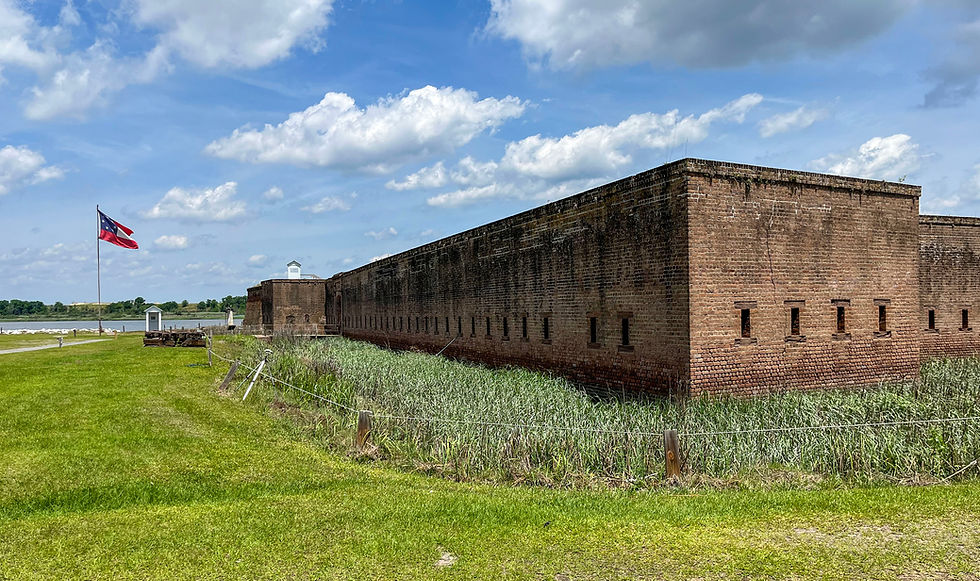The Betsy Ross House
- Tim Murphy

- Jun 7, 2018
- 5 min read
Updated: Apr 24, 2021
Located at 239 Arch Street, the Betsy Ross House stands stately among the high-rises and modern buildings of Philadelphia. This 270-year-old home is believed to be the site of Ross’s upholstery business from 1776 to 1779, and is generally recognized as the place where the nation’s first flag was sewed. The property was converted into a museum and living history exhibit in 1898—thanks to the efforts of Charles Weisberger and the Betsy Ross Memorial Association—and has been in operation ever since. The museum showcases six rooms, restored to their 18th-century appearance, that detail the life of Betsy Ross and her contributions to American history.

Elizabeth ‘Betsy’ Ross was born to the family of Rebecca and Samuel Griscom on January 1, 1752. The eighth of seventeen children, Betsy grew up in a strict Quaker household that espoused the tenets of modesty and discipline. She attended The Friends School in Philadelphia and received a Quaker-based education until she was 14. After finishing school, she started an apprenticeship with expert upholsterer William Webster. During that time, Betsy fell in love with John Ross, a fellow upholstery apprentice and nephew of George Ross, a member of the Continental Congress and signer of the Declaration of Independence.
John was a member of the Episcopalian Church, which posed a problem for the young couple. Inter-denominational marriages were unacceptable according to the Quaker church, and those who violated this rule were expelled from the Quaker community. In spite of the risks, Betsy and John eloped to New Jersey on November 4, 1773. They opened their own upholstery shop in Philadelphia shortly thereafter.
John joined the Pennsylvania Provincial Militia in 1775, heeding the call for independence. While on guard duty one January night in 1776, John was killed by a munitions explosion. The freak accident left Betsy a widow at 24 years of age. Enamored by her husband’s sacrifice, Betsy did everything she could to help support the patriot cause. She sewed tents and blankets, packaged ammunition for the Continental Army, and mended uniforms for the Navy.
In May 1776, Continental Congressmen George Washington and George Ross (her deceased husband's uncle) entered Betsy's upholstery shop and asked her to make a flag for the new nation. Congress already had a rough draft ready to go, but Ross made a slight change to the design. Instead of a six-pointed star, she suggested a five-pointed star, which was quicker to sew. The draft was finalized and it took Ross a little over a month to complete. The flag—nicknamed the ‘Stars and Stripes’—was commissioned to fly over the naval vessels defending Philadelphia. On June 14, 1777, Congress passed the Flag Resolution, which recognized the Stars and Stripes as the official flag of the United States.

On June 15, 1777, Betsy married Captain Joseph Ashburn, a privateer for the US Navy. Though Joseph was often at sea, the couple had two children over the course of their marriage. On one expedition to the West Indies, Ashburn's ship was captured by British forces. He was taken prisoner and died at Old Mill Prison on March 3, 1782. Around the same time, Betsy’s first daughter, Zilla, died from disease when she was nine months old. Her second daughter, Eliza, was born a few weeks later.
On May 8, 1783, Ross married for the third and final time to John Claypoole, one of Ashburn’s fellow inmates at Old Mill who had been released after The Treaty of Paris. The two had five daughters over the course of their 34-year marriage and were active members of the Society of Free Quakers. Betsy continued to work as a seamstress and sewed flags for the United States Army during the War of 1812.
In 1828, after 50 years of upholstery work, Betsy Ross retired from her trade. She eventually lost her eyesight in the early 1830s and spent her last years living with her daughter Jane on Cherry Street in Philadelphia. Betsy Ross passed away January 30, 1836, at 84 years of age. She was interred at the Free Quaker Burial Grounds on North Fifth Street in Philadelphia. In 1975, in preparation for the American Bicentennial, her remains were moved to their present location at the Betsy Ross House.
The legend of Betsy Ross didn’t come to fruition until after the Civil War. In 1870, William Canby—Ross’s grandson—delivered a speech to the Pennsylvania Historic Society, during which he claimed that Washington approached Betsy in May 1776 to sew the nation’s first official flag. Canby’s tale was an oral history that had been passed down through the generations of Betsy’s family, and this was the first time it had even been publicized. While there was little physical evidence to support the claim, Canby produced official statements from elderly members of his family validating its authenticity. Some scholars expressed great enthusiasm at the prospect of a young, patriotic, female role model who made significant contributions to the American cause. Others approached Canby’s story with skepticism, citing the lack of evidence and potential manipulation of oral history.

At the time of Canby’s oration, there was a renewed, nation-wide passion for patriotism (due to the end of the Civil War and upcoming Centennial celebration). News of Betsy Ross and her contributions to American history spread across the country, regardless of myth. Given the circumstances, two questions come to mind. First, was the significance of Betsy’s story exaggerated (or even fabricated) to create the identity of an American hero? Second, did hyper-patriotism contribute to the story’s popularity and the willingness of scholars to accept these unsubstantiated claims as fact? The answer to both questions is that it is possible. There is little credible evidence to support the proposed sequence of events; however, that doesn’t mean they didn’t happen. The only documentation historians have to go off of are meeting notes from the Continental Congress confirming payment to Ross for “making ships colours.” These sources are not enough to definitively prove that Betsy Ross sewed the first American flag, nor can they say that she contributed to the final design.
In order to fully understand the complexity behind her story, it is important to lay out some key facts. First, Betsy Ross was not the only flag-maker or upholsterer in Philadelphia. Other women, such as Margaret Manning and Rebecca Young, sewed flags and other materials for the Continental Army. Rebecca Young, in particular, is credited with sewing the Grand Union Flag, which flew on Continental ships an entire year before Ross supposedly sewed the Stars and Stripes! Additionally, Young advertised her business in newspapers and pamphlets, leaving historians with more primary sources to examine and validate her work with. Unfortunately, Ross's business lacks such documentation.
What we do know is this: Ross was indeed a prominent upholsterer in Philadelphia during the Revolutionary War and she was commissioned by Continental Army to sew flags and other materials. Did she actually speak with George Washington, alter Congress's design, and sew what would be the nation's first Stars and Stripes? It's hard to say for sure, but perhaps that's the beauty of folklore. Legends such as Betsy Ross are supposed to emulate the virtues of heroism and reflect the American spirit. Betsy's story is revolutionary in and of itself. It portrays Ross as an independent, entrepreneurial woman in a time when women were expected to be subservient, docile, and confined to the "domestic sphere." Betsy's story breaks the gender roles of her day and has inspired countless women to pursue their own interests and defy gender norms themselves. While the events in Betsy's life are still in question, the positive impact her legacy has left on countless Americans remains undisputed.
For more information on the Betsy Ross House, click HERE
To learn more about how the legend of Betsy Ross came to be, check out the links below:












